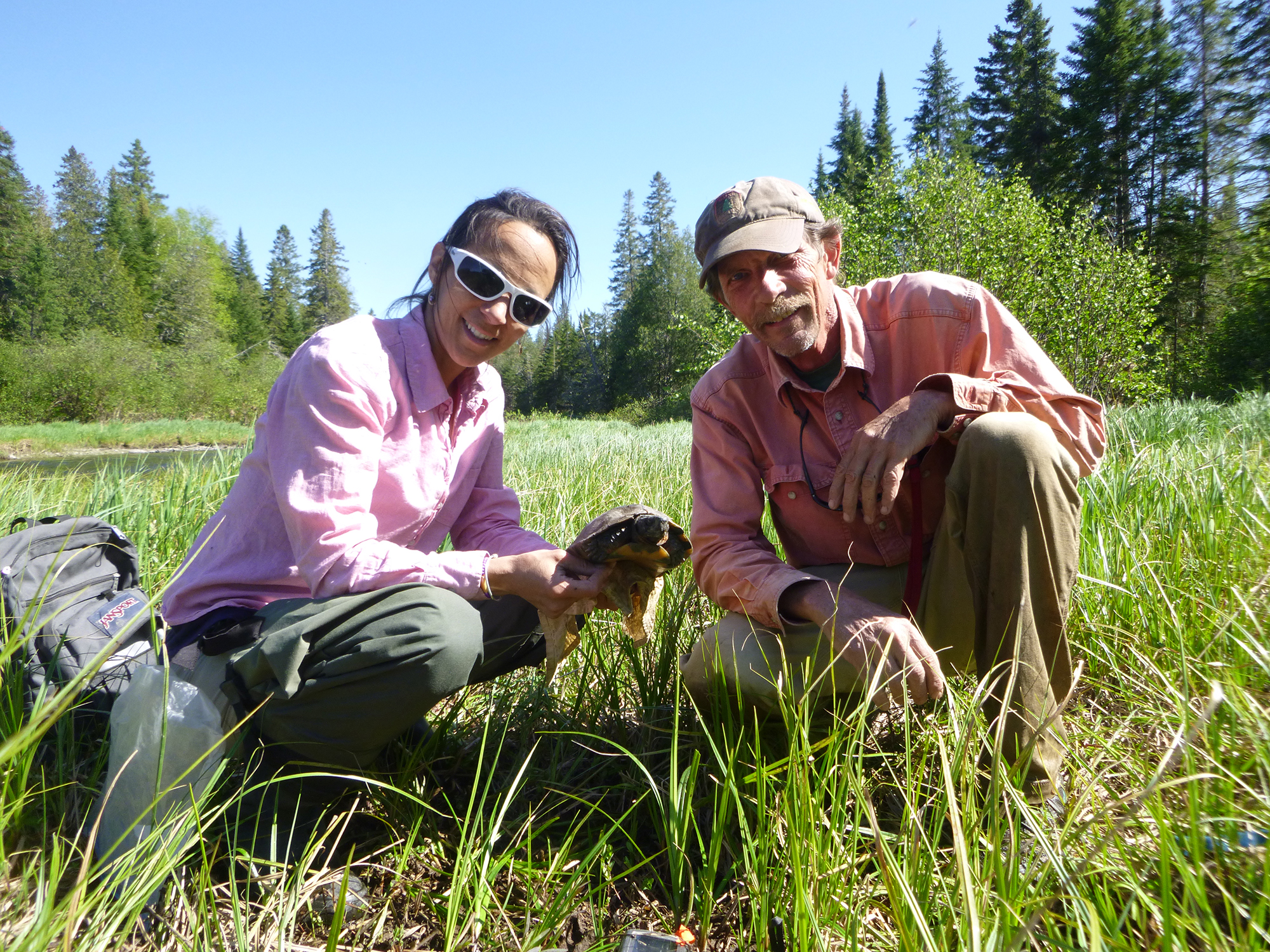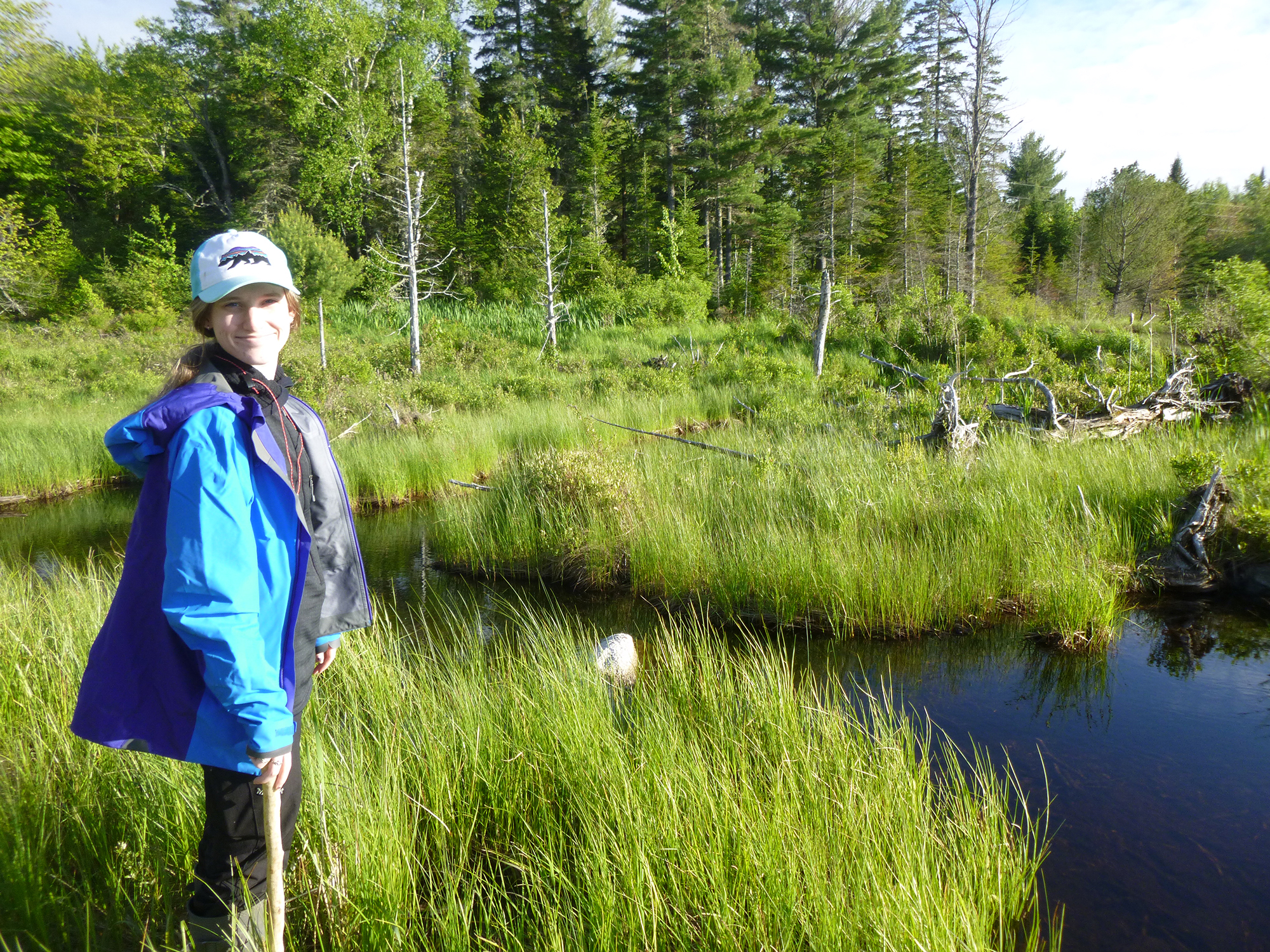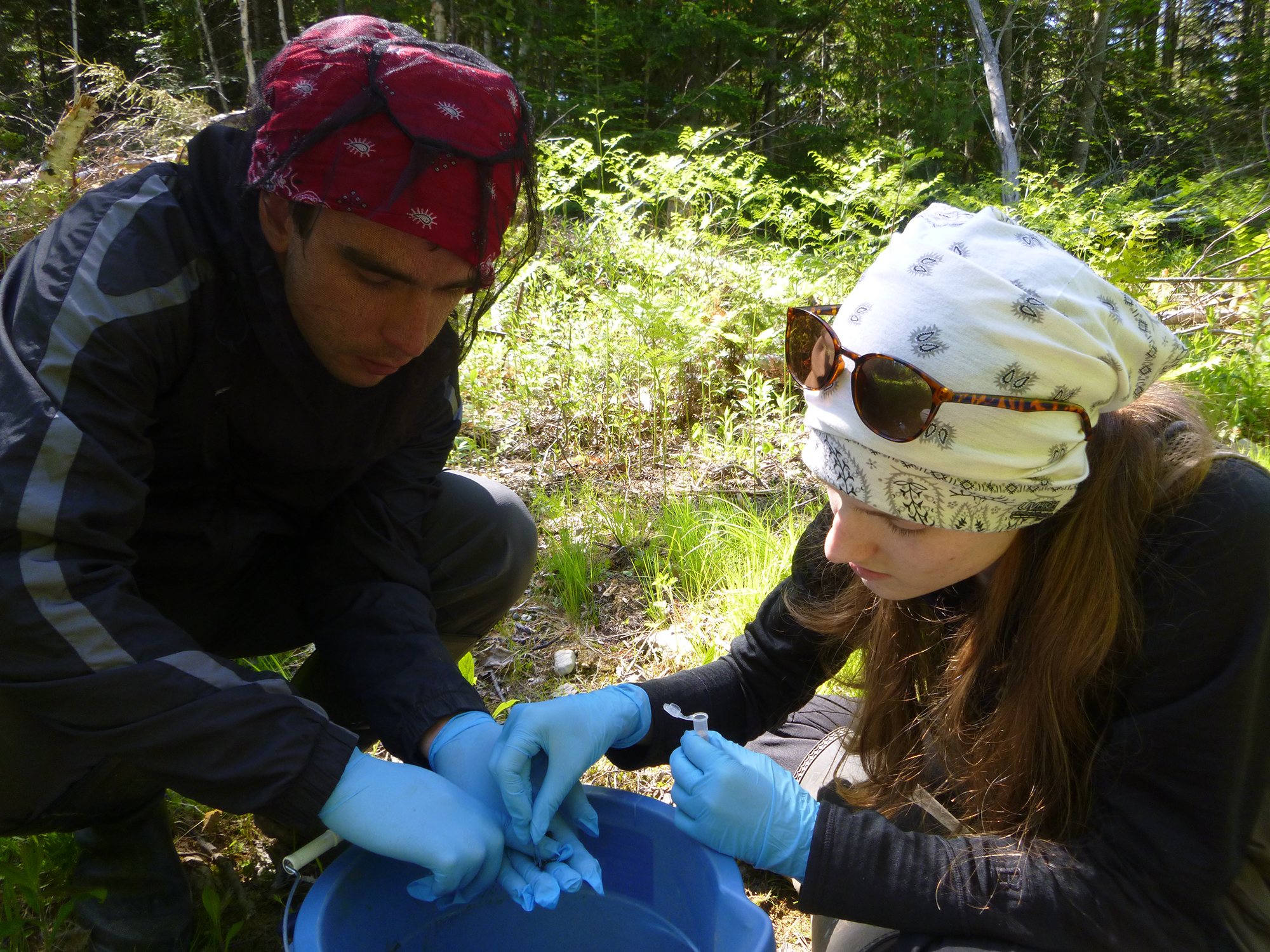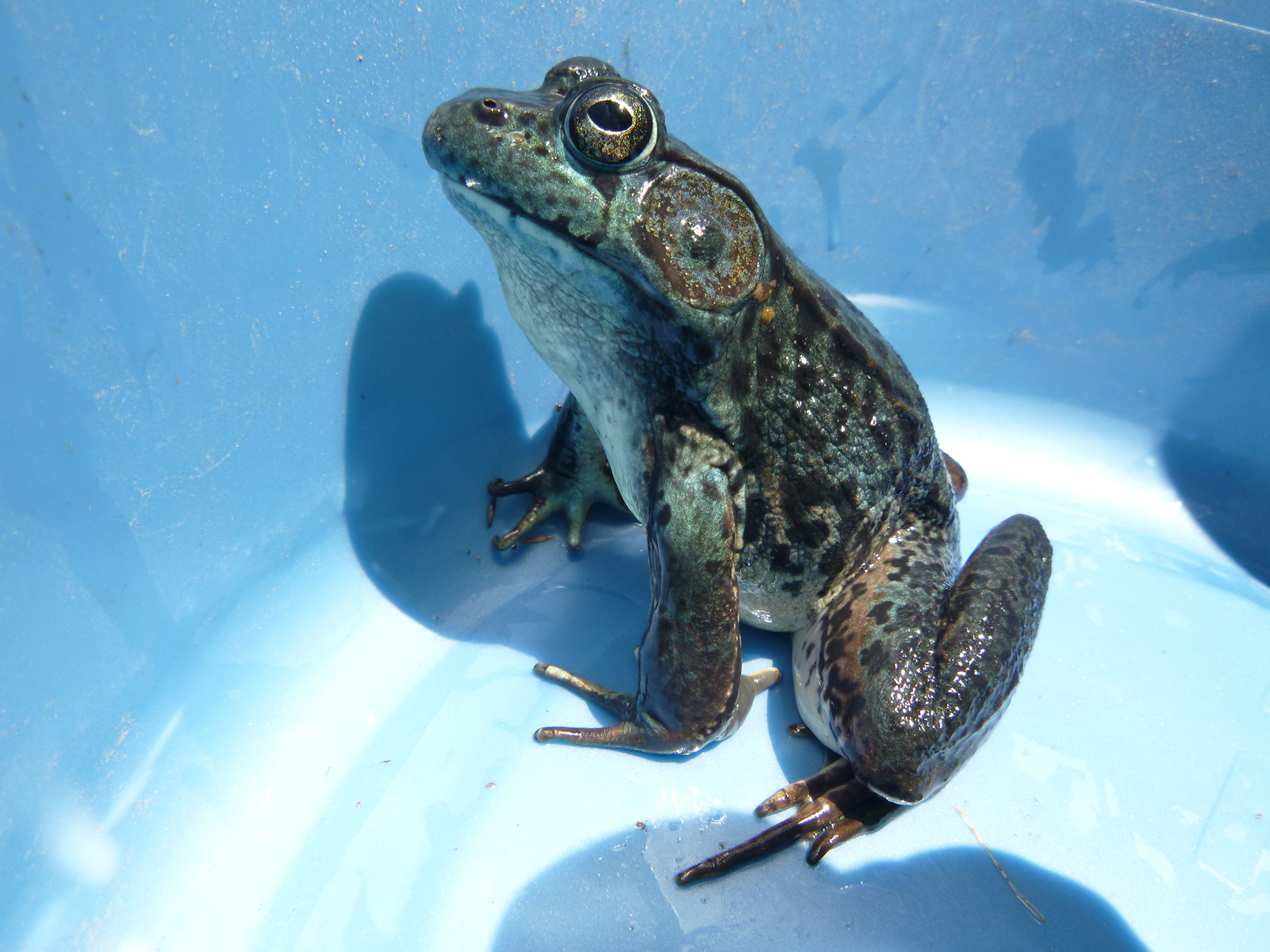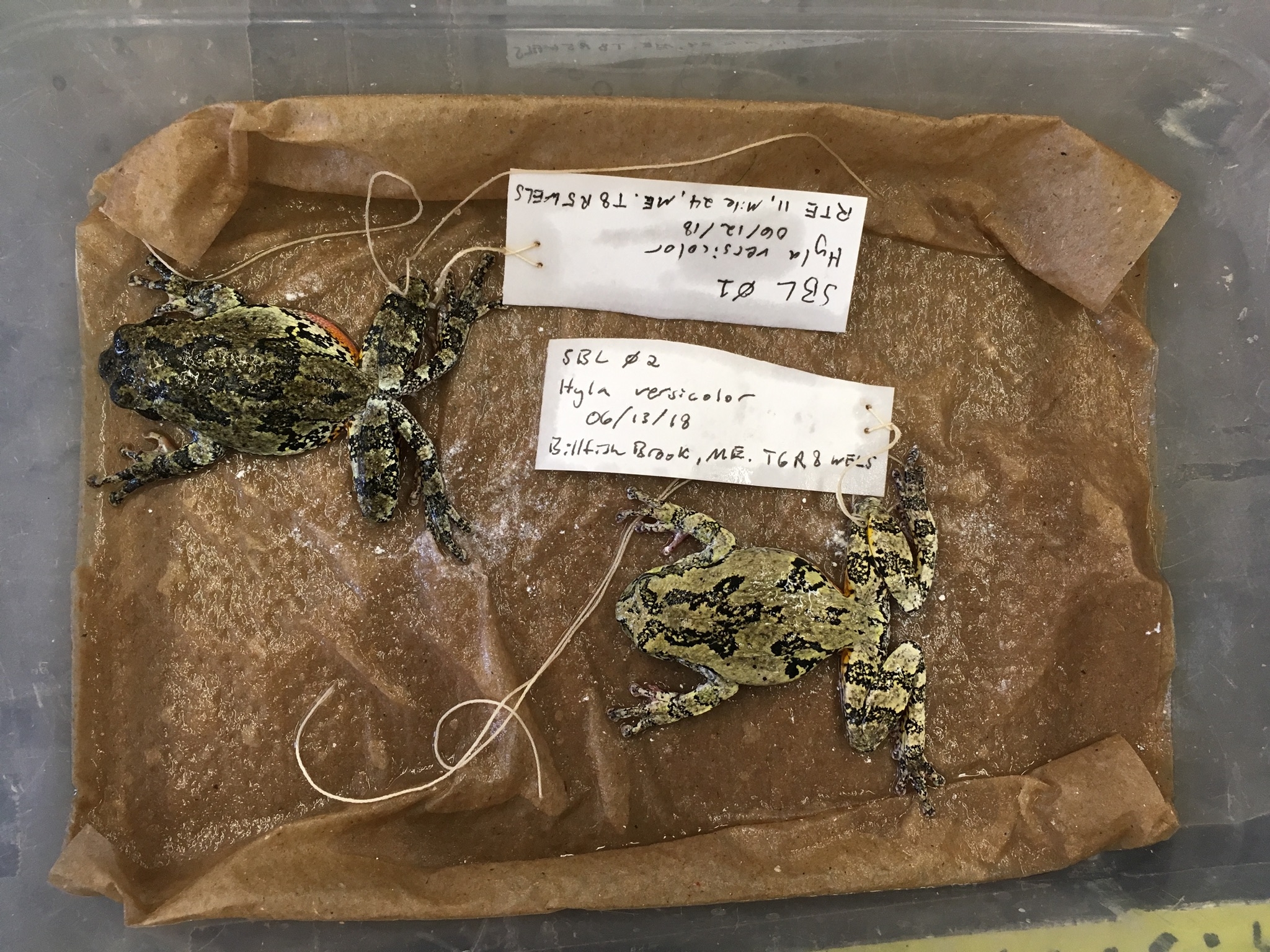 Scott Lindemann, Master of Wildlife Conservation Student, University of Maine
Scott Lindemann, Master of Wildlife Conservation Student, University of Maine
Both summer and our summer fieldwork are fully underway now. Our project has been running and collecting data more or less continuously since May 25, and we’ve got a lot of exciting data to show for it. Some of the more interesting observations include genetic mutants (a spotless Northern Leopard Frog and a blue Green Frog) as well as several occurrences of Gray Treefrog north and west of its previously known range, in T8R5 and T6R8 WELS. We have also been able to record some of the farthest northwest occurrences of Eastern Newt (T6R12 WELS), Northern Dusky Salamander (T5R11 WELS), Northern Two-lined Salamander (T5R11 WELS), and Blue-spotted Salamander (T6R12 WELS) in Piscataquis County. Although these last species are believed to be present throughout Maine, these occurrences still represent exciting results from difficult-to-access areas of northwest Maine.
We’ve also been able to go up to Chapman, ME, where we’ve been able to help UMaine Presque Isle professor Dave Putnam’s crew survey for Wood Turtle. Dave took us into the North Maine Woods on the Pinkham Road and also helped us in our amphibian surveys there.
Camping has been great, and although the bugs have really started to show up in force, a smoky fire keeps them mostly at bay. We’ve been treated to some great weather, stunning views, and plenty of wildlife (Common Loons, Moose, Black Bear, etc.). We’re even able to sneak in a little reading sometimes in the evenings as we make dinner.
We’re waiting on Gray Treefrog to warm up enough to start calling even farther north, and have anecdotal evidence of them existing as far north as Chapman and Caribou. In the meantime, we’re gearing up for another trip into the North Maine Woods, this time up to Churchill Dam to search for the elusive Snapping Turtle.

